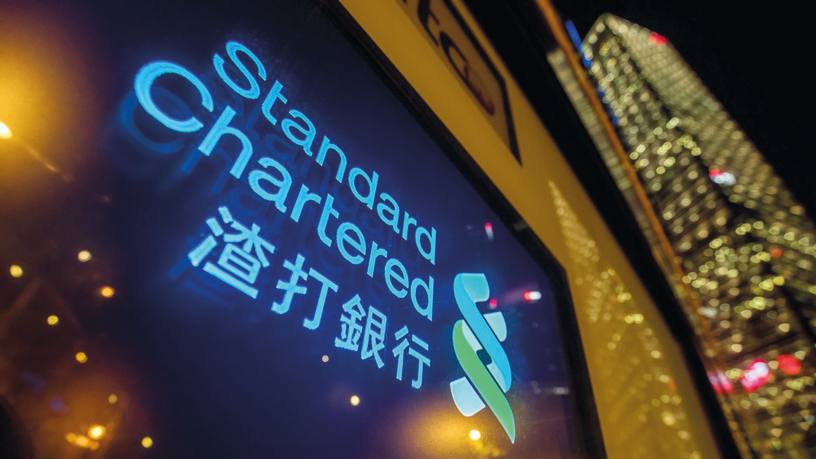Wealth in Asia keeps on growing. As the region’s gross domestic product continues its rapid rise, so does the wealth of its citizens. However, there are significant gaps in knowledge when it comes to understanding how to manage personal wealth — after all, the region’s capital markets are still in their infancy and Shanghai’s stock exchange only marked its 30th anniversary in 2020. With this gap in experience among consumers, wealth managers are moving in to seize the opportunity.
In its ‘Asia wealth management post-Covid-19’ report, McKinsey outlined how the level of onshore personal financial assets (PFAs) in Asia was at an estimated $34tn by the end of 2019, having grown at a 10% compound annual growth rate over the previous five years. By comparison, Europe and North America had seen a rate of up to 6% during the same timeframe. Despite the rate of growth, penetration of wealth management and financial planning services remained low, with managed assets accounting for as little as 20% of the region’s PFAs.
The Asian wealth management industry can also see great change come down the pipeline, as wealth transitions from the older population to the next generation. Its new customers are arriving with a very different set of expectations.
“Asian family businesses hold or control much of Asia’s private and corporate wealth, so there will be a vast wealth transfer,” says Janet Mui, investment director for investment solutions at wealth managers Brewin Dolphin. “[In addition] the number of billionaires has been growing at a fast pace in the past decade.”
Chinese people tend to prefer property investments, but with policy becoming restrictive and further returns more limited, they are turning to diversify their investment
However, it is not only the super wealthy that are attracting attention. The increase in wealth across whole populations is providing banks with plenty of new business opportunities. The McKinsey report estimates that customers in the mass affluent category (with wealth between $100,000 to $250,000) and the affluent (with wealth between $250,000 and $1m) would account for up to 60% of onshore incremental revenue pools by 2025.
“On a mass-market level, the emerging middle class in China and Asia at large is a big story in the next decade,” Ms Mui adds. “Chinese people tend to prefer property investments, but with policy becoming restrictive and further returns more limited, they are turning to diversify their investments. In Asia, the penetration by online retailing is surging at a faster pace compared to developed economies, showing they are a generation that is very comfortable and embracing technology.”
Asia’s new wealthy
As the number of wealth management customers increases, their demographic is also changing. Kelvin Lei, chief executive and co-founder of Hong Kong-based robo-advisory firm Aqumon, says the company has witnessed this shift in its data. “From the robo-adviser client base, we can see that around 80% are aged 25 to 40 years old, with 60% male and 40% female. What they have in common is they are all very tech savvy and want a clean [user] experience,” he says.
This shift towards a younger and more evenly gender-balanced client base is an important part of the change in how high-net-worth (HNW) individuals want to manage their money. Ms Mui says: “The notable trends are the growing number of HNW women and new-money millennials due to intergenerational wealth transfer. Women and young investors tend to put more emphasis on environmental, social and governance (ESG) factors when it comes to investment. Younger investors also prefer handling investments, seeking advice and doing transactions online. On a mass-market level, we also see young people taking greater care of their financial future and willing to get financial education from third parties.”
Getting this additional education is proving important for the young affluent clients, who want to get the most from their funds. Qiaojia Li, co-founder and chief executive of digital wealth management service Rosecut Technologies, explains that while in Europe and the UK most money is held in discretionary portfolios, with the portfolio manager overseeing the buying and selling of investments, in Asia the approach is more hands-on. The banker will send the client notifications of the exchange-traded funds or mutual funds they could buy each day and act on their decision.
However, leaving the choice down to the client can inadvertently lead them into greater levels of risk. “The Asian focus on stocks can leave them more exposed to concentration risk,” Ms Li says. “We saw this clearly when the pandemic hit and the Chinese economy came to a stop. If your portfolio is only Chinese companies, this is a disaster. Less experienced clients often want to invest in companies they know, which often means domestic companies. But these are tied to the same economy as their salary and property, leaving them exposed.”
Instead, bankers are trying to sell their clients a discretionary mandate, allowing them greater control over the portfolio and the ability to spread the investments across countries, reducing exposure.
Wealth as a lifestyle
The new generation of HNW customers has different demands from their parents. They look at their wealth management services as forming part of their overall lifestyles, and banks have been quick to move on this.
Indonesia’s Bank OCBC NISP overhauled its wealth management services during 2020, turning its offering into a lifestyle brand to entice a new generation of customers. Indonesia’s population is very young, with a median age of just 31, with around half of the population aged between 20 and 39 years old. The bank found there was a considerable lack of knowledge of investing within this age group, with 69% stating they did not have an investment strategy.
Juky Mariska, executive vice-president and wealth management head at OCBC NISP, says the bank saw the opportunity to fill in the knowledge gaps. “As wealth is passed on to the second or third generation, we regularly engage them in seminars on wealth education and market knowledge,” she says.
OCBC NISP further developed services to connect with the next generation on their own terms. “With the younger generation, naturally we would need to engage them also through digital and the power of social media,” Ms Mariska adds. “Our chatbot adviser Rachel [Reach Your Life Goals] was developed to meet the younger audience’s demands on financial planning and investment knowledge. Our app ‘ONe Mobile’ also provides a complete end-to-end wealth products array, from forex transactions to purchasing government bonds and mutual funds.”
Other banks have realised the importance of making their wealth management offering a lifestyle service. Christine Ciriani, chief executive of wealthtech firm, Finantix, says: “Wealth management is now about connectivity and being part of a community. HSBC did a good job when they launched their Jade service. They offered a focused segment which is not necessarily a full private banking experience, but appeals to the affluent as it provides an additional concierge service and brings them together socially, which is important for clients in Asia. As well as educating people about their financial assets, it brings people together around topics like ESG.”
Clients are keen to articulate their preferences for investment in a more nuanced way than simply not investing in tobacco
Through working with other institutions, banks have been able to rapidly develop sophisticated services for their clients. Nobu Sakamoto, managing executive officer, head of private banking at SMBC Nikko Securities, says: “As part of our 360-degree service and through our joint venture with Edmond de Rothschild Group, we provide a range of customised non-financial services and solutions for our HNW customers and their families. This includes educational support, such as assisting with interest in studying abroad for the HNW customers’ children.”
Ethical investments
The lifestyle aspect also extends into the investments customers make. Customers now want to ensure their investments follow the same moral and ethical choices they make in their consumer habits.
“Clients are keen to articulate their preferences for investment in a more nuanced way than simply not investing in tobacco, for example,” Ms Ciriani says. “Covid-19 has actually accelerated this, as clients want to choose areas that will benefit from their investments. They want their sustainable funds to track certain criteria, [such as] working with charities or companies which benefit their local community.”
Because of a higher risk appetite, these investors are willing to finance nascent sectors. “The younger generation is looking at alternative investment paths, often looking to put funds into start-ups,” Rosecut’s Ms Li says. “They are also driven by [corporate social responsibility], often with an aversion to fossil fuels. When faced with investing in companies that don’t actively do harm or companies that actively do good, they will opt for the latter.”
Avoiding concentration on one asset class is sound advice for everyone. Vicky Kong, regional head of wealth management Greater China and north Asia and global head, wealth proposition at Standard Chartered, notes the varying expectations from the different age groups is actually good for business. “This is a good trend for the bank, as it means we have a more diverse portfolio of clients of different ages and different walks of life that help us on transformation and redefine banking experience,” she says.
Digital progress
With these changes comes the inevitable digital shift — an expansion that gives customers a level of service that was not previously possible. And like many developments in recent months, the steps have been expedited by the impact of the coronavirus.
“Standard Chartered launched ‘My RM’ last year during the pandemic,” Ms Kong says. “It was developed prior to this, but the timing was good to meet the needs of our customers. My RM combines both human elements and a client-centric digital capability.
“It supports clients to connect with their relationship managers for portfolio review or market update, with its video and audio call, and screen sharing functions. It was launched together with the Invest from Home, Bank from Home client programme. We hope My RM and our digital wealth platform become effective tools which clients will integrate into their everyday lives.”
This has also enabled the products on offer to become more sophisticated. Andrew King, head of Hong Kong at digital consultancy firm Synechron, says: “The move towards digitisation has allowed the large financial organisations to aggregate a number of products, giving a 360-degree view of their customers in real time, covering numerous banks accounts. This means they are able to better tailor propositions to customers, which makes them more sticky and improves margins in the long run.”
Even with the expansion of services, it does not mean the needs of the older generations — who still make up the bulk of the HNW customers — are being forgotten.
Ms Ciriani says: “We are also seeing that branches are still a very valuable part of delivering holistic service to clients. There is a desire for digital tools, but they can create an ecosystem [that helps] to bring the client into branch, and have that human interaction and be part of a community.”
“We have also seen a lot of older customers using a lot of digital capabilities,” adds Ms Kong. “People across China and Hong Kong are very digital savvy and use their mobiles for banking transactions. Digital is no longer a space for just the younger generation.”
Reducing costs
Digitisation also comes with benefits for the banks. As has been seen in other areas of banking, moving to a digital-first model can bring about significant cost savings in the wealth management arena.
Maanas Varun, managing consultant at Synechron, says this can help with prioritising resource. “This allows banks to offer services to more customers, so they are able to widen the net of the customers they look after. This brings in those who fall into the not-yet-rich category, such as professionals who are early in their careers. If they can build up the relationship early, the clients will likely stick with them,” he says.
Digitisation also enables the development of products which simply would not have been possible with analogue services. “The key thing that can be done now is the integration of artificial intelligence and machine learning,” Mr Varun adds. “Banks are now able to run complicated calculations in milliseconds. It is finally cost effective enough for banks to utilise the big data they have been sitting on for years. It also allows them to create a better client profile. In the past, they may have grouped customers into rich, very rich and extremely rich — now they can categorise them on dozens of metrics.”
The level of granular detail can go down to relationship managers paying attention to how a brand is perceived on social media, and alerting the client if any adverse publicity may affect the value of their investments.
The increased level of oversight also dovetails with the demands of the regulators. Aqumon’s Mr Lei says: “Co-operation with banks is significant as they are still regulated by authorities like Hong Kong’s Securities and Futures Commission. The regulators are encouraging the use of [digital] services to give retail clients more options, like global certification, [to increase] transparency.”















